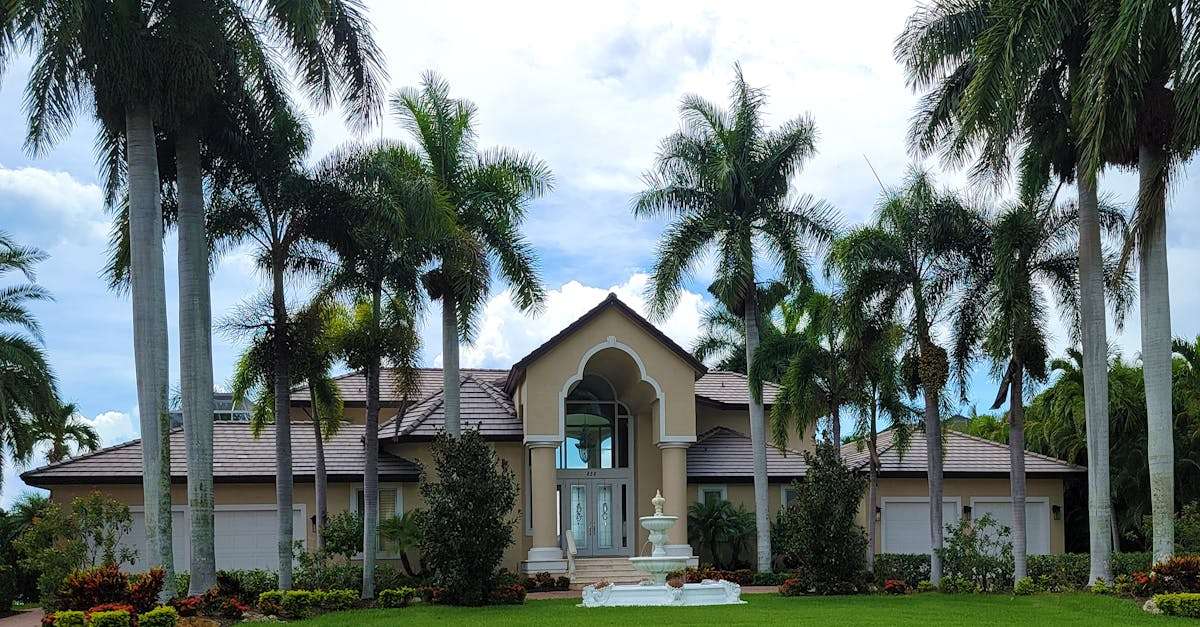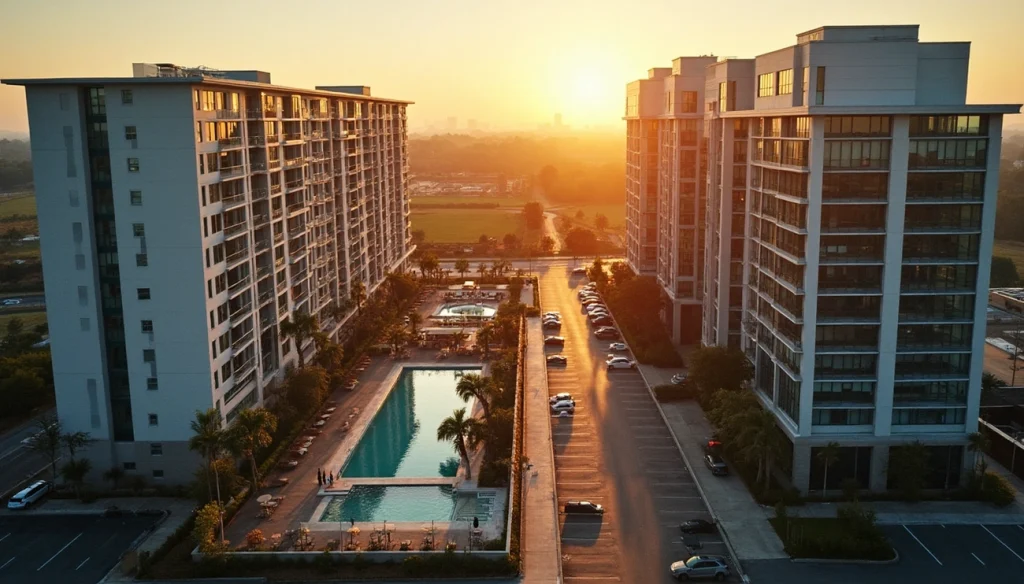In an era of economic uncertainty and market volatility, high-net-worth individuals and family offices are increasingly turning to luxury real estate as a reliable strategy for wealth preservation and growth. As a Southern California-based real estate asset manager, property manager, and development manager, Primior has observed firsthand the enduring appeal of premium properties as a cornerstone of diversified investment portfolios. This comprehensive exploration delves into the multifaceted reasons behind the sustained attractiveness of luxury real estate, offering insights for discerning investors seeking to safeguard and expand their wealth through strategic property acquisitions.
The luxury real estate market has demonstrated remarkable resilience in the face of global economic challenges, cementing its position as a preferred asset class for affluent investors. From sprawling estates in exclusive enclaves to cutting-edge urban penthouses, high-end properties continue to captivate buyers seeking both financial security and lifestyle enhancement. As we navigate through the intricacies of this specialized market segment, we’ll examine the key factors driving investment decisions, emerging trends shaping the landscape, and essential considerations for those looking to capitalize on the unique opportunities presented by luxury real estate.
Drawing upon our extensive experience in the Southern California market and beyond, Primior aims to provide a nuanced understanding of why luxury properties remain a beacon of stability in turbulent times. Whether you’re a seasoned real estate investor or considering your first foray into the world of premium properties, this exploration will equip you with valuable insights to inform your investment strategy and maximize your potential for long-term success in the ever-evolving luxury real estate arena.
The Enduring Appeal of Luxury Real Estate
Luxury real estate has long been regarded as a cornerstone of wealth preservation and growth for high-net-worth individuals and family offices. This enduring appeal stems from a combination of factors that set premium properties apart from other investment vehicles.
One of the primary attractions of luxury real estate is its ability to weather economic storms with remarkable resilience. Unlike more volatile assets such as stocks or cryptocurrencies, high-end properties tend to maintain their value over time, providing a sense of stability and security for investors. This characteristic is particularly appealing during periods of market turbulence or inflationary pressures, as tangible assets like real estate can serve as a hedge against economic uncertainty.
Moreover, luxury properties offer a unique blend of financial and lifestyle benefits. For many affluent investors, acquiring a premium residence isn’t just about monetary gains – it’s also an opportunity to enhance their quality of life. Whether it’s a beachfront villa, a mountain retreat, or a sophisticated urban penthouse, these properties provide a tangible representation of success and a private sanctuary for relaxation and entertainment.
The exclusivity factor associated with luxury real estate further contributes to its allure. Prime locations, limited supply, and high barriers to entry create a sense of scarcity that can drive appreciation over time. This exclusivity also extends to the social aspects of ownership, as certain addresses or developments can confer prestige and access to elite networks.
Additionally, luxury real estate offers diverse opportunities for portfolio diversification. Investors can choose from a wide range of property types, locations, and investment strategies to suit their individual goals and risk tolerance. From direct ownership of single-family homes to fractional interests in resort properties, the luxury market provides flexibility and customization options that are highly valued by discerning investors.
As we delve deeper into the world of luxury real estate investing, it becomes clear that the enduring appeal of this asset class is rooted in its ability to provide both financial stability and personal fulfillment. For those seeking to preserve and grow their wealth while enjoying the fruits of their success, premium properties continue to offer a compelling proposition in an ever-changing investment landscape.
Market Dynamics and Investment Opportunities
The luxury real estate market operates under a unique set of dynamics that create both challenges and opportunities for savvy investors. Understanding these market forces is crucial for identifying and capitalizing on promising investment prospects in the premium property sector.
One of the defining characteristics of the luxury market is its relative insulation from broader economic trends. While general real estate markets may experience significant fluctuations based on factors such as interest rates or employment levels, high-end properties often march to the beat of their own drum. This phenomenon is largely due to the financial resilience of affluent buyers, who are less likely to be affected by short-term economic downturns or credit constraints.
However, this doesn’t mean that the luxury market is immune to external influences. Global economic conditions, geopolitical events, and shifts in wealth distribution can all impact demand for premium properties. For instance, changes in tax policies or foreign investment regulations can significantly affect the flow of capital into specific luxury markets.
One of the most notable trends in recent years has been the growing interest in secondary and tertiary markets. While traditional luxury hubs like New York, London, and Hong Kong continue to attract investors, there’s an increasing appetite for high-end properties in emerging locations. This shift is driven by factors such as improved infrastructure, lifestyle preferences, and the search for better value propositions.
The COVID-19 pandemic has also reshaped the luxury real estate landscape, accelerating certain pre-existing trends and creating new ones. There’s been a surge in demand for spacious properties with home offices, wellness amenities, and outdoor living areas. Additionally, the rise of remote work has prompted many affluent individuals to reconsider their primary residence locations, leading to increased interest in suburban and rural luxury properties.
For investors, these market dynamics present a range of opportunities. Some may choose to focus on established markets with proven track records of stability and appreciation. Others might seek out up-and-coming locations with potential for significant growth. There’s also increasing interest in niche segments within the luxury market, such as eco-friendly properties or developments catering to specific lifestyle preferences.
It’s important to note that success in luxury real estate investing often requires a long-term perspective. While some markets may offer opportunities for quick gains, the true value of premium properties often reveals itself over extended periods. Patience, coupled with thorough market research and expert guidance, is key to navigating the complexities of luxury real estate investment.
As we continue to explore the intricacies of this market, it becomes clear that understanding and adapting to these dynamic forces is essential for investors looking to preserve and grow their wealth through luxury real estate. By staying attuned to evolving trends and leveraging expert insights, investors can position themselves to capitalize on the unique opportunities presented by this exclusive sector of the property market.
Key Factors Driving Luxury Real Estate Investment
The decision to invest in luxury real estate is influenced by a complex interplay of factors that extend beyond simple financial considerations. Understanding these key drivers is essential for investors seeking to make informed choices in the premium property market.
One of the primary motivators for luxury real estate investment is the potential for long-term appreciation. While market conditions can fluctuate in the short term, high-end properties in desirable locations have historically demonstrated strong value retention and growth over extended periods. This appreciation potential is particularly attractive to investors looking to build generational wealth or secure a stable financial future.
Another crucial factor is the income-generating potential of luxury properties. Many investors view premium real estate as a means of creating passive income streams through rental arrangements. Whether it’s a vacation home rented out during peak seasons or a high-end apartment in a major city, the ability to generate substantial rental income can significantly enhance the overall return on investment.
Diversification is also a key consideration for many affluent investors. Luxury real estate offers a tangible asset class that can help balance a portfolio heavily weighted towards stocks, bonds, or other financial instruments. This diversification can provide a hedge against market volatility and inflation, offering a sense of security in uncertain economic times.
The lifestyle component of luxury real estate cannot be overstated. For many high-net-worth individuals, owning premium properties aligns with their personal aspirations and quality of life goals. Whether it’s a beachfront mansion, a ski chalet in the mountains, or a penthouse in a world-class city, these properties offer experiences and amenities that go beyond mere financial returns.
Tax considerations also play a significant role in luxury real estate investment decisions. Depending on the jurisdiction, property ownership can offer various tax advantages, such as deductions for mortgage interest, property taxes, and depreciation. Additionally, some investors use luxury real estate as part of broader tax planning strategies, such as 1031 exchanges or opportunity zone investments.
The prestige and status associated with owning luxury properties is another driving factor for many investors. Certain addresses or developments carry significant social cachet, providing access to exclusive communities and networks. This intangible value can be particularly important for those looking to establish or enhance their social standing.
Lastly, the potential for customization and personal expression attracts many investors to luxury real estate. Unlike more standardized property types, high-end residences often offer opportunities for extensive customization, allowing owners to create spaces that truly reflect their personal tastes and lifestyles.
As we delve deeper into these key factors, it becomes clear that luxury real estate investment is driven by a combination of financial, lifestyle, and personal considerations. For those navigating this market, understanding and prioritizing these factors is crucial for making investment decisions that align with their overall wealth preservation and growth strategies.
Global Trends Shaping Luxury Real Estate Markets
The luxury real estate landscape is constantly evolving, influenced by a myriad of global trends that shape buyer preferences, investment patterns, and market dynamics. Staying abreast of these trends is crucial for investors seeking to make informed decisions in the premium property sector.
One of the most significant trends in recent years has been the increasing internationalization of luxury real estate markets. Wealthy individuals from emerging economies, particularly in Asia and the Middle East, have become major players in established luxury markets around the world. This globalization of demand has led to increased competition for prime properties and has influenced design trends to cater to diverse cultural preferences.
Sustainability and eco-consciousness have also emerged as key drivers in the luxury real estate market. High-net-worth buyers are increasingly prioritizing properties with green features, energy-efficient systems, and sustainable materials. This shift towards environmentally responsible luxury living has spurred innovation in construction techniques and home technologies, creating new opportunities for developers and investors alike.
The concept of wellness has gained significant traction in luxury real estate circles. Properties that offer integrated wellness amenities such as spa facilities, meditation gardens, and state-of-the-art fitness centers are in high demand. This trend extends beyond individual residences to entire developments designed around holistic well-being, reflecting a growing emphasis on health and self-care among affluent consumers.
Technology integration has become a defining feature of modern luxury properties. Smart home systems, advanced security features, and seamless connectivity are now expected rather than exceptional in high-end residences. The ability to control various aspects of a home remotely, from climate settings to entertainment systems, has become a key selling point for tech-savvy luxury buyers.
The rise of experiential luxury has also influenced real estate trends. Many affluent individuals are seeking properties that offer unique experiences or access to exclusive amenities. This could include residences within luxury hotel brands, properties with private vineyards or art galleries, or developments that offer concierge services and curated lifestyle experiences.
Urbanization continues to shape luxury real estate markets, but with evolving preferences. While prime urban locations remain desirable, there’s growing interest in properties that offer the best of both worlds – proximity to city centers coupled with space, privacy, and natural surroundings. This has led to increased development of luxury properties in suburban or semi-rural areas within commuting distance of major cities.
The concept of multi-generational living has gained traction in luxury real estate circles. Properties designed to accommodate extended families, with separate living areas or guest houses, are increasingly sought after. This trend reflects changing family dynamics and a desire for closer intergenerational connections among wealthy families.
Lastly, the impact of global events such as the COVID-19 pandemic has accelerated certain trends and created new ones. There’s been a notable shift towards larger properties with dedicated home offices, outdoor spaces, and amenities that support a more home-centric lifestyle. The pandemic has also heightened interest in second homes and properties in less densely populated areas, as affluent buyers seek havens away from urban centers.
As we navigate these global trends, it’s clear that the luxury real estate market is in a state of constant evolution. For investors and developers, staying attuned to these shifts is essential for identifying emerging opportunities and creating properties that resonate with the changing preferences of high-net-worth buyers. By understanding and anticipating these trends, stakeholders in the luxury real estate sector can position themselves for success in an ever-changing market landscape.
Strategic Approaches to Luxury Real Estate Investment
Developing a strategic approach to luxury real estate investment is crucial for maximizing returns and minimizing risks in this specialized market segment. As experienced asset managers, we at Primior have observed various successful strategies employed by savvy investors in the premium property sector.
One key strategy is to focus on location-driven investments. Prime locations in established luxury markets often offer stable appreciation and strong rental demand. However, identifying up-and-coming areas with potential for significant value growth can yield even higher returns. This approach requires thorough market research, including analysis of infrastructure developments, demographic shifts, and economic indicators that could signal future appreciation.
Diversification within the luxury real estate portfolio is another important strategy. This can involve investing in different types of properties (residential, commercial, hospitality) or spreading investments across various geographic locations. Such diversification helps mitigate risks associated with market fluctuations in specific sectors or regions.
Value-add investments present another strategic opportunity in the luxury market. This involves acquiring properties with potential for improvement through renovations, expansions, or repositioning. By enhancing the property’s features or addressing market gaps, investors can significantly increase the asset’s value and appeal to high-end buyers or renters.
Long-term hold strategies are often favored in luxury real estate investing. Given the high transaction costs and the typically slower pace of appreciation in premium properties, a patient approach that allows for value accumulation over time can be highly effective. This strategy also aligns well with wealth preservation goals, as it provides a stable asset base that can be passed down through generations.
Partnering with luxury hospitality brands has emerged as an innovative investment strategy. These collaborations can involve branded residences or participation in hotel-condo projects, leveraging the prestige and services associated with high-end hospitality names to enhance property value and appeal.
Off-market deals represent another strategic approach in luxury real estate. Many high-value properties are sold privately, never reaching public listings. Cultivating a network of industry contacts and working with well-connected luxury real estate specialists can provide access to these exclusive opportunities.
Timing the market, while challenging, can be a powerful strategy when executed correctly. This involves closely monitoring market cycles and economic indicators to identify optimal periods for buying or selling luxury properties. While perfect timing is rarely achievable, making informed decisions based on market trends can significantly impact investment outcomes.
Leveraging technology and data analytics is becoming increasingly important in luxury real estate investment. Advanced market analysis tools, predictive modeling, and AI-driven insights can provide investors with a competitive edge in identifying opportunities and making informed decisions.
Sustainable and wellness-focused investments are gaining traction as strategic approaches in the luxury sector. Properties that incorporate eco-friendly features, energy efficiency, and wellness amenities not only appeal to a growing segment of environmentally conscious buyers but also often command premium prices and enjoy stronger value retention.
Lastly, adopting a global perspective in luxury real estate investment can open up a world of opportunities. International diversification allows investors to capitalize on varying market cycles and economic conditions across different countries, potentially enhancing overall portfolio performance.
As we navigate these strategic approaches, it’s important to recognize that successful luxury real estate investment often requires a combination of strategies tailored to individual goals, risk tolerance, and market conditions. By carefully considering these various approaches and adapting them to specific circumstances, investors can position themselves for success in the dynamic and rewarding world of luxury real estate.
Risk Management in Luxury Property Investments
While luxury real estate can offer significant rewards, it’s not without its risks. Effective risk management is crucial for protecting investments and ensuring long-term success in this high-stakes market. At Primior, we emphasize the importance of a comprehensive risk management strategy for all luxury property investments.
One of the primary risks in luxury real estate is market volatility. High-end properties can be particularly susceptible to economic downturns, changes in local regulations, or shifts in buyer preferences. To mitigate this risk, investors should conduct thorough market research and maintain a diversified portfolio across different locations and property types.
Liquidity risk is another significant concern in the luxury market. Premium properties often take longer to sell due to a smaller pool of potential buyers. This can pose challenges if an investor needs to quickly liquidate assets. Strategies to address this risk include maintaining a balanced portfolio with more liquid assets and having contingency plans for extended holding periods.
Regulatory and legal risks are particularly relevant in the luxury real estate sector. Changes in tax laws, zoning regulations, or foreign ownership restrictions can significantly impact investment outcomes. Staying informed about local and international regulations and working with experienced legal professionals is essential for navigating these complexities.
Currency risk is a consideration for international luxury real estate investments. Fluctuations in exchange rates can affect the value of properties and rental income in the investor’s home currency. Hedging strategies or focusing on markets with stable currencies can help mitigate this risk.
Maintenance and operational risks are often underestimated in luxury property investments. High-end properties typically require significant ongoing expenses for upkeep, security, and management. Factoring these costs into investment calculations and having robust property management systems in place is crucial for preserving asset value and generating consistent returns.
Reputational risk is uniquely important in the luxury market. Negative publicity or association with controversial issues can impact property values and marketability. Conducting thorough due diligence on properties and business partners, and maintaining high ethical standards in all transactions, is essential for protecting reputational integrity.
Environmental risks, including natural disasters and climate change impacts, are increasingly relevant for luxury real estate investors. Properties in coastal areas or regions prone to extreme weather events may face heightened risks. Incorporating climate resilience into investment decisions and ensuring adequate insurance coverage is crucial for long-term risk management.
Technological obsolescence is an emerging risk in the luxury property sector. As smart home technologies and sustainability features rapidly evolve, older properties may lose appeal to high-end buyers. Regular upgrades and a focus on adaptable, future-proof design can help mitigate this risk.















